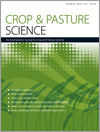Cover crops grown during fallows can increase organic matter inputs, improve soil surface cover to reduce erosion risk, and enhance rainfall infiltration. An experiment compared a chemical fallow control with six different cover crops terminated at either 60 or 90 days after sowing. The commercial choice of millet (Echinochloa esculenta) was compared with two summer legumes (lablab (Lablab purpureus) and soybean (Glycine max)), and three winter legumes (field pea (Pisum sativum), faba bean (Vicia faba) and common vetch (Vicia sativa)). Cover crop biomass growth, atmospheric nitrogen (N) fixation, surface residue cover, and soil water and mineral N dynamics during the growth period and subsequent fallow were measured. Soil water and N availability and yield of wheat crops following the experimental treatments were simulated over a 100-year climate record using APSIM. Both experiments and simulations found the legumes inferior to millet as spring-sown cover crops, because they were slower to accumulate biomass, required later termination and provided groundcover that was less persistent, resulting in lower soil water at the end of the fallow. After 90 days of growth, the summer legumes, lablab and soybean, produced the most biomass and fixed more N (up to 25 kg N/ha) but also extracted the most soil water and mineral N. Legume N fixation was low because of high soil mineral N status (>100 kg N/ha) and occurred only when this had been depleted. At the end of the subsequent fallow in April, soil water was 30–60 mm less and soil mineral N 80–100 kg/ha less after both millet and 90-day terminated summer legume cover crops than the chemical fallow control. Simulations predicted soil-water deficits following legume cover crops to be >50 mm in the majority of years, but soil mineral N was predicted to be lower (median 80 kg N/ha) after millet cover crops. In conclusion, monoculture legume cover crops did not provide advantages over the current commercial standard of millet, owing to less effective provision of groundcover, low N fixation and possibly delayed release of N from residues. Further work could explore how legumes might be more effectively used as cover crops to provide N inputs and soil protection in subtropical farming systems.
How to translate text using browser tools
11 October 2017
Can legumes provide greater benefits than millet as a spring cover crop in southern Queensland farming systems?
E. M. Wunsch,
L. W. Bell,
M. J. Bell
ACCESS THE FULL ARTICLE

Crop and Pasture Science
Vol. 68 • No. 8
October 2017
Vol. 68 • No. 8
October 2017
green manure
model
N cycling
N mineralization
semi-arid
sub-tropics




